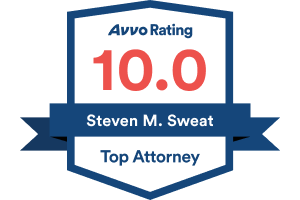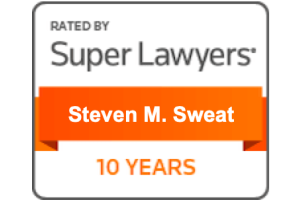- Free Consultation: 866-966-5240 Tap Here To Call Us
California Appeals Court Refuses to Reverse Verdict in Truck Accident

In California, people who are injured in accidents may still be able to recover compensation for their losses when their own negligence contributed to the accidents’ causes as long as the other drivers were also negligent. A driver may be found to be negligent per se if he or she violated a statute and the violation was a proximate cause of the accident. In Taulbee v. EJ Distribution Corp., Cal. Ct. App., Case No. G054545, the court considered a case in which both drivers violated a statute approximately eight minutes apart, and the second driver suffered serious injuries when he collided into the first driver’s truck.[1]
Background of the case
On Aug. 20, 2012, Carlos Aldana was driving a semi-truck and trailer on Interstate 5 while he was traveling to a warehouse in Santa Ana. While he was driving, the truck lost power and lights on the dashboard turned on. He was able to steer the truck and trailer onto a gore point. A gore point is a triangular area that is formed between the freeway and an exit ramp. Aldana managed to park his truck in the gore point area, and his entire truck and trailer were contained within it.
Aldana called his dispatcher, who told him to wait for help to arrive. Approximately eight minutes later, Stephen Taulbee was driving a Jeep in the area. He ran into the back of Aldana’s trailer and suffered catastrophic injuries. Taulbee had no memory of the accident or what caused him to leave the travel lane and drive into the gore point to strike Aldana’s truck. Taulbee filed a lawsuit against Aldana and his employer, EJ Distribution Corp., alleging that Aldana was negligent for driving into the gore point and should pay damages to compensate Taulbee and that EJ Distribution Corp. was vicariously liable as Aldana’s employer.
The plaintiff and defendants were unable to reach a settlement agreement, so the case went to trial in the Superior Court. The parties agreed that if Aldana was found partly or wholly responsible for the accident, EJ Distribution Corp. would be vicariously liable. As we have explained, trucking companies may be vicariously liable when the negligent actions of their employees cause accidents and injuries to others.[2]
Taulbee asked the judge to give an instruction that the jury could find that Aldana was negligent per se for violating Cal. Veh. Code § 21651 for driving into the gore point area to park his truck. The judge did not give the requested instruction and instead gave a jury instruction about general negligence. After both sides rested, the jury returned a unanimous verdict in favor of the defendants. Taulbee appealed.
Issue: Whether the court erred by failing to instruct the jury on Aldana’s negligence per se in violating Cal. Veh. Code § 21651?
Under Cal. Veh. Code § 21651, it is unlawful for motorists to drive a vehicle over or on a dividing section such as a gore point.[3] In civil matters in which a defendant violates a statute that results in an injury accident, the injured victims are able to ask for a jury instruction under negligence per se. Since the court did not give that instruction, Taulbee appealed.
Rule: A party’s failure to exercise due care will be presumed to have occurred if he or she violated a statute.
Under Cal. Evid. Code § 669, A person is presumed to have violated his or her duty of care when he or she has violated a statute.[4] When this occurs, the court will normally instruct the jury on negligence per se. However, the plaintiff must also be able to show that the violation of the statute was the proximate cause of the resulting accident and injury and that the person was one of the classes of people who were meant to be protected by the statute. Under Traxler v. Varaday, 16 Cal. Rptr. 2d 297 (Cal. Ct. App. 1993), the burden of proving that negligence per se is on the person who asks for the instruction.[5] That person must prove that each of the elements that are outlined in Cal. Evid. Code § 669 are present. The defendants argued that the court was correct in denying the instruction because the plaintiff had failed to prove all of the elements that were required under the evidence rule.
Analysis
The court reviewed the instructions that were given by the court and noted that the court did not instruct the jury on negligence per se as requested by the plaintiff. The plaintiff argued that there was clear evidence that Aldana had violated the statute and that the judge should have instructed the jury on negligence per se as a result. The court found that there was clear evidence that Aldana violated the statute by crossing into the gore point area and parking his truck. The plaintiff had argued that he could have coasted ahead to a nearby shoulder to safely park his truck instead. The court then looked at whether the plaintiff had met his burden of proof to show that all of the elements of the evidence rule were present, including the following:
- The defendant violated a statute;
- The violation was a proximate cause of the plaintiff’s injury;
- The injury resulted from the type of accident that the statute was meant to prevent; and
- The injured person was a member of the class of people who were meant to be protected by the statute.
The court then looked at the testimony that was given at the trial and noted that Aldana stopped his truck in the gore point area approximately five to eight minutes before Taulbee collided into it. Because of this difference in time, the court found that Taulbee did not prove that the violation of the statute proximately caused his injury because Aldana drove into the gore point area, which violated the statute, too long before Taulbee arrived on the scene. It also found that even if an error had occurred, it would be considered to be a harmless error because it would not have affected the outcome of the case. The court said that the jury had been instructed on negligence and that it unanimously found that Aldana was not negligent in parking his truck in the gore point. Because of this, the court stated that the instruction would not have changed the outcome of the case.
Conclusion
The court affirmed the lower court’s ruling. The plaintiff was ordered to pay the defendants’ costs on appeal.
Contact the Law Offices of Steven M. Sweat
If you have suffered a serious injury in an accident that was caused by someone who violated a traffic law, it may be possible for you to get a negligence per se instruction. A negligence per se instruction can make it easier for you to prove your case. However, you must be able to present evidence that the statutory violation was a proximate cause of your injury. Getting help from an experienced personal injury lawyer may increase the likelihood that you might recover compensation for your injuries and losses. Contact the Law Offices of Steven M. Sweat to schedule a free consultation and to learn about your potential claim.
Sources
[1] https://law.justia.com/cases/california/court-of-appeal/2019/g054545.html?utm_source=summary-newsletters&utm_medium=email&utm_campaign=2019-05-24-personal-injury-386b238448&utm_content=text-case-read-more-7
[2] https://www.victimslawyer.com/why-do-you-need-a-truck-accident-lawyer.html
[3] http://leginfo.legislature.ca.gov/faces/codes_displayText.xhtml?lawCode=VEH&division=11.&title=&part=&chapter=3.&article=1.
[4] https://leginfo.legislature.ca.gov/faces/codes_displayText.xhtml?lawCode=EVID&division=5.&title=&part=&chapter=3.&article=4.
[5] https://www.courtlistener.com/opinion/2257443/traxler-v-varady/












